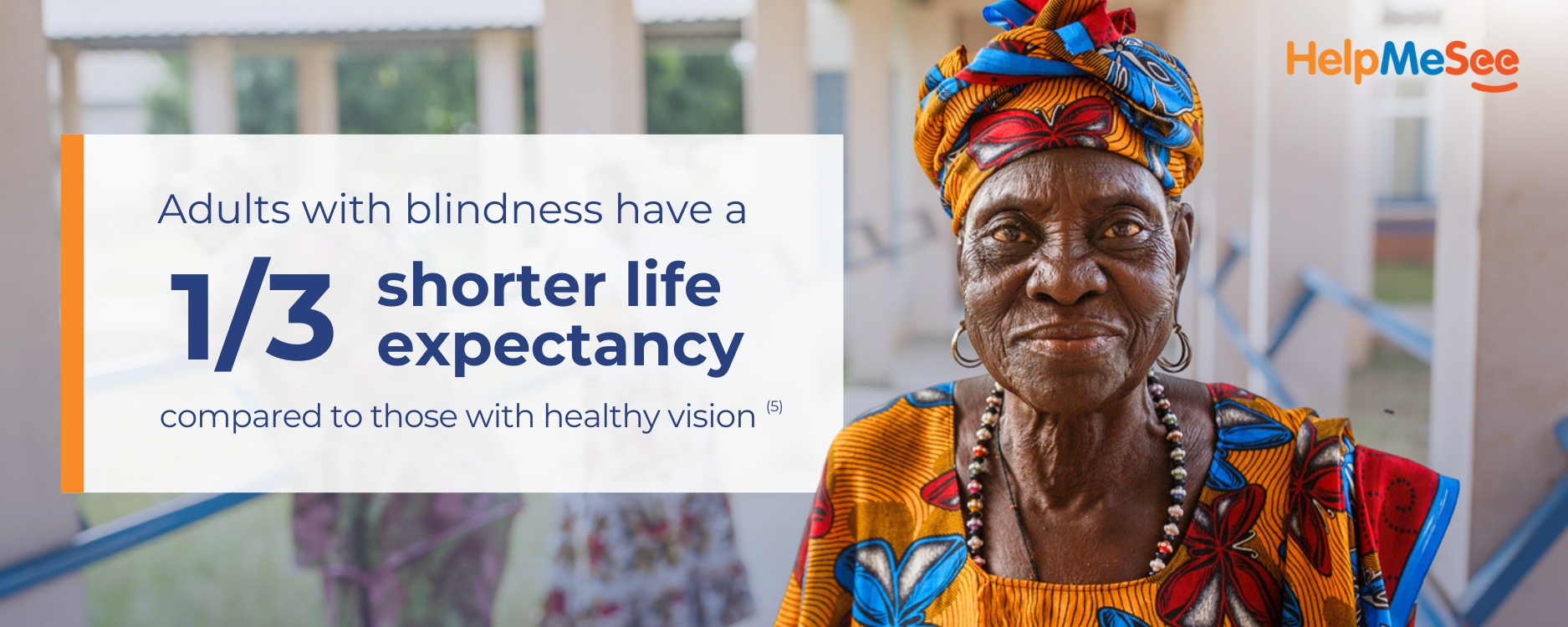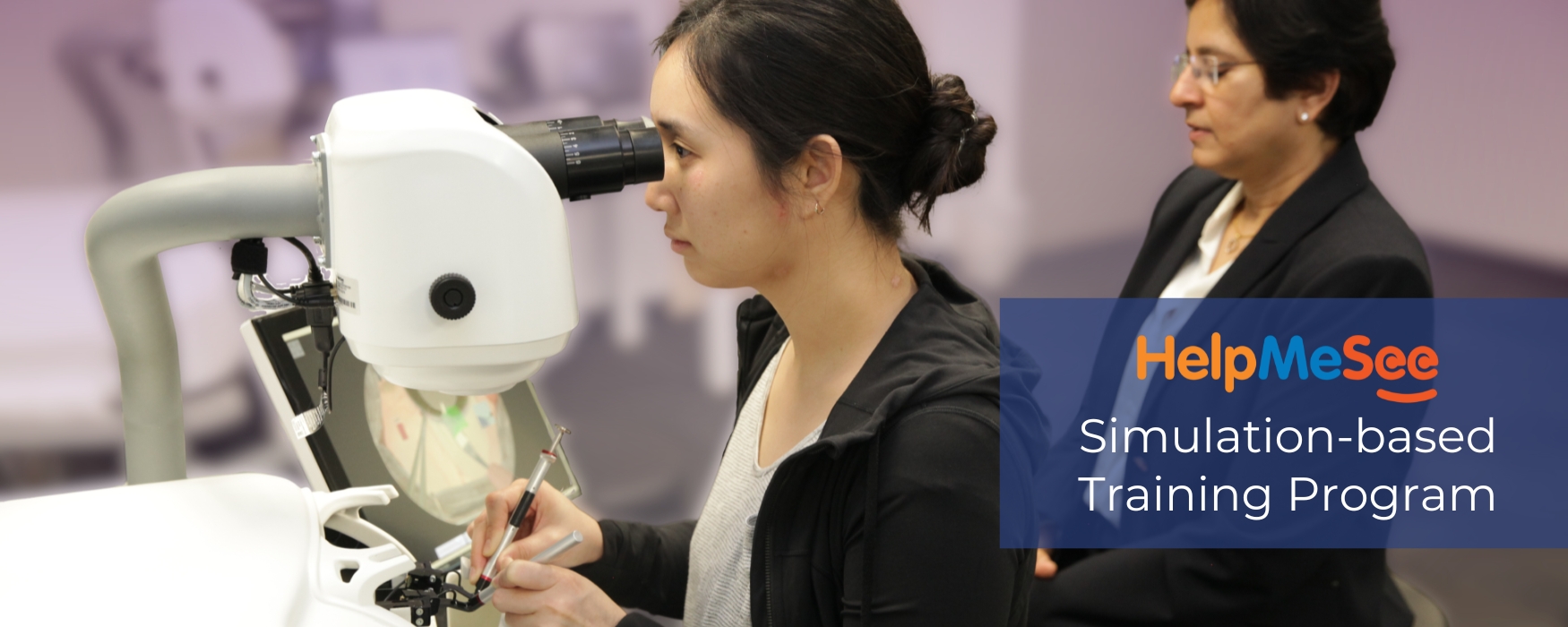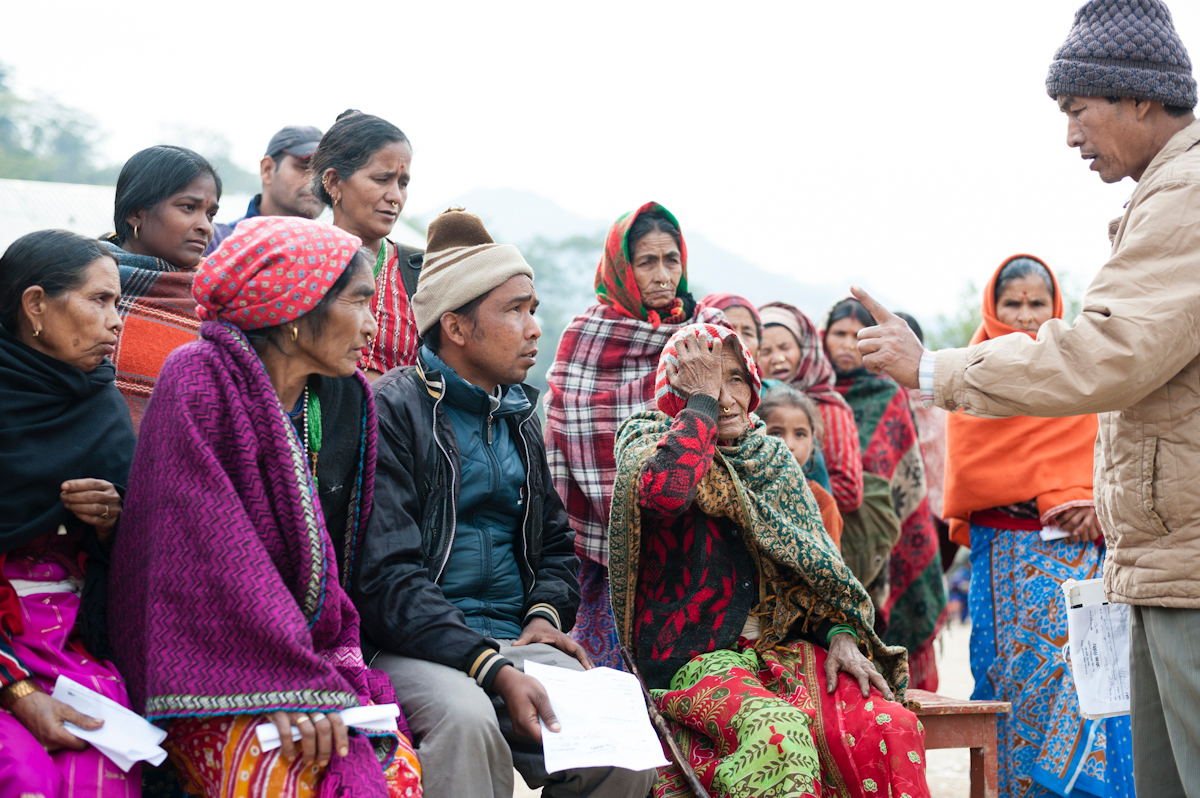Most people are unaware that cataract blindness and visual impairment affects approximately 100 million individuals worldwide, (1) straining local communities where sight-restoring treatment is not accessible. In the realm of global health initiatives, it is common for programs targeting unfamiliar diseases and conditions to receive less media attention than those focusing on diseases that have widespread awareness such as heart disease, cancer, and diabetes. This overshadowing of attention can affect research funding and prevention, treatment, and advocacy efforts significantly.
Cataract, a treatable eye condition, is a clouding of the eye’s natural lens that leads to decreased vision and, if untreated, eventual blindness. Symptoms associated with cataract include faded colors, blurry vision, visual disturbances, and trouble with bright lights and seeing at night. Cataract can significantly impact individuals’ quality of life, making routine tasks such as reading, driving, and recognizing faces challenging or impossible.

WHY IS CATARACT AWARENESS MONTH IMPORTANT?
The month-long cataract awareness campaign provides an opportunity to mobilize support for this widespread and often overlooked issue.
Putting the cataract blindness health crisis in perspective:
- Cataract causes half of all cases of blindness and 33% of vision impairment worldwide. (2)
- Between 1990 and 2020, the rate of cataract blindness increased by 29.7%. (3)
- By 2050, the prevalence of cataracts will increase by 78% to reach more than 200 million cases. (4)
- Adults with blindness have a one-third shorter life expectancy compared to those with healthy vision. (5)
- Poor vision can reduce literacy and school performance across different age groups. (6)
- Only 17% of individuals with cataract-related vision impairment have access to an appropriate intervention. (7)
- The global cost of blindness and moderate to severe vision loss is between $26.43 and $41.72 billion and $137.53 and $180.83 billion, respectively, and the global cost of combined vision loss is between $160 and $216.32 million. (8)
The good news is that cataract can be treated with a safe and quick procedure. Manual Small-Incision Cataract Surgery (MSICS) requires minimal resources, provides high-quality visual outcomes similar to more expensive cataract surgery procedures, and is cost effective to ensure scalability for large public health care programs.

THE ECONOMIC IMPACT OF INTERVENTION
The economic benefits generated from interventions such as MSICS are plentiful, especially in low-economic areas that see the largest impact from preventable blindness. First, there is a direct gain in economic output. Those who have restored vision may now return to the workforce or provide care for others, including young children in their immediate family. Women are at a higher risk for cataract and are less likely to receive sight-restoring surgery. Second, there is reduced need for family members or friends to provide care for the visually impaired, allowing them to re-enter the workforce or, if of school age, participate regularly in educational programs. The youngest female in the household is often responsible for providing care, making it impossible for them to attend school or work.
Cataract also exacts a heavy toll on economies. Lost productivity, increased health care costs, and decreased earning potential for individuals affected by vision loss contribute to a significant drain on resources. The estimated reduction in employment associated with blindness, severe vision loss, and moderate vision loss is 33.8%, 31.4%, and 8.9%, respectively, and the global annual productivity loss is estimated at $410.7 billion ($43.6 billion for blindness and $367.1 billion for moderate to severe visual impairment). (10)

THE ROLE OF HELPMESEE AND SURGICAL TRAINING
There is a shortage of cataract surgeons worldwide, threatening to widen the gap between those in need of and receiving sight-restoring surgery. Unfortunately, the funding gap to address preventable blindness is estimated at $14.3 billion.(11) For donors and humanitarians looking to make a meaningful impact, there are tangible ways to help.
HelpMeSee is dedicated to eradicating cataract blindness worldwide by providing comprehensive training programs designed to teach aspiring cataract surgeons the skills necessary to perform MSICS. The HelpMeSee Simulation-based Training Program is a virtual reality platform that provides hands-on training to eye care professionals.
As a nonprofit organization, HelpMeSee has ambitions to scale its impact to eliminate the backlog of patients who need sight-saving surgery.
CONCLUSION
Cataract Awareness Month is a poignant reminder of the importance of addressing preventable vision loss. By raising awareness, educating others, and supporting initiatives aimed at training eye care professionals, we can work together to create a world where cataract blindness is a thing of the past.
To learn more about the public health crisis of cataract blindness and how you can make a difference, visit www.helpmesee.org.
